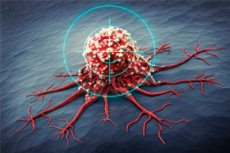New publications
Evolutionary therapies: a new strategy for cancer treatment using mathematical modeling
Last reviewed: 02.07.2025

All iLive content is medically reviewed or fact checked to ensure as much factual accuracy as possible.
We have strict sourcing guidelines and only link to reputable media sites, academic research institutions and, whenever possible, medically peer reviewed studies. Note that the numbers in parentheses ([1], [2], etc.) are clickable links to these studies.
If you feel that any of our content is inaccurate, out-of-date, or otherwise questionable, please select it and press Ctrl + Enter.

Cancer presents significant challenges due to the development of resistance and the potential for relapse. Resistance may arise from permanent genetic changes in cancer cells or non-genetic changes in the behavior of cancer cells caused by treatment. Standard cancer treatment typically involves using the maximum tolerated dose of a drug to effectively kill drug-sensitive cells. However, this approach often fails in the long term because drug-resistant cancer cells can grow faster when all drug-sensitive cells are killed.
An evolutionary approach to treatment, called adaptive therapy, personalizes treatment doses or interruptions based on individual patient responses. The goal of adaptive therapy is to maintain sufficient numbers of sensitive cells to control the growth of resistant cells. Recent studies and clinical trials have shown that adaptive therapy can delay the development of resistance more effectively than standard treatment.
Determining the dose and treatment interruptions for each patient is challenging because cancer is a complex evolving system and each patient is unique. Mathematical models can help in developing such individualized treatment strategies. Indeed, several mathematical models have been developed to study the impact of different treatment strategies on patient outcomes. However, existing mathematical models often ignore the impact of acquired resistance and plasticity of cancer cells. 'Acquired resistance' covers various types of resistance that arise, often due to genetic changes. 'Cellular plasticity' refers to the ability of cancer cells to change their phenotypes in response to changes in their microenvironment, such as fluctuations in treatment dosage or discontinuation of treatment.
A research team led by Dr. Kim Eunjung from the Center for Natural Products Informatics Research at the Korea Advanced Institute of Science and Technology (KIST, Director Oh Sang-rok) developed a theoretical basis for cancer treatment strategies that take tumor evolution into account. They developed a mathematical model to predict tumor evolution by considering the acquisition of resistance by cancer cells and their ability to change phenotypic behavior (plasticity) during treatment. Analysis of their model revealed the conditions for the existence of an effective dosage window, a range of doses that can maintain tumor volume at an equilibrium point where tumor volume remains unchanged and stable.
For some tumors with plasticity, treatment interruptions help cancer cells to become sensitive again, teaming up with other sensitive cells to suppress the growth of resistant cells. The research team proposed evolutionary dosing therapy, which involves treatment in cycles consisting of treatment interruptions, minimal effective doses, and maximal tolerated doses. Treatment interruptions allow plastic cancer cells to regain sensitivity, after which the minimal effective dose is applied to control tumor volume. The maximal tolerated dose is then administered to further reduce tumor size. This dosing cycle effectively controls tumor volume to a manageable level. Numerical simulations of the proposed strategies applied to a patient with melanoma further illustrate these findings. The results show that evolutionary dosing can redirect tumor dynamics, maintaining tumor size below an acceptable level.
The developed mathematical model can predict the effective dosage range of cancer treatment candidates before clinical trials. It can help determine the anti-cancer effects of new treatments and identify the effective dosage range for each drug. In addition, the model facilitates the development of personalized cancer treatment strategies, taking into account the evolutionary dynamics of the tumor in each patient during treatment.
Quote: "In the current study, we highlighted the role of phenotypic plasticity of cancer cells in improving the manageability of tumor burden using cyclic doses of evolutionary treatment," said Dr. Kim Yunjung from the Center for Natural Product Informatics Research at the Korea Institute of Science and Technology.
She also mentioned plans to use the mathematical model to design animal studies and clinical trials of potential anti-cancer drugs derived from natural products, with the goal of establishing dosing regimens that effectively control tumor burden.
The results of the study were published in the journal ScienceDirect.
